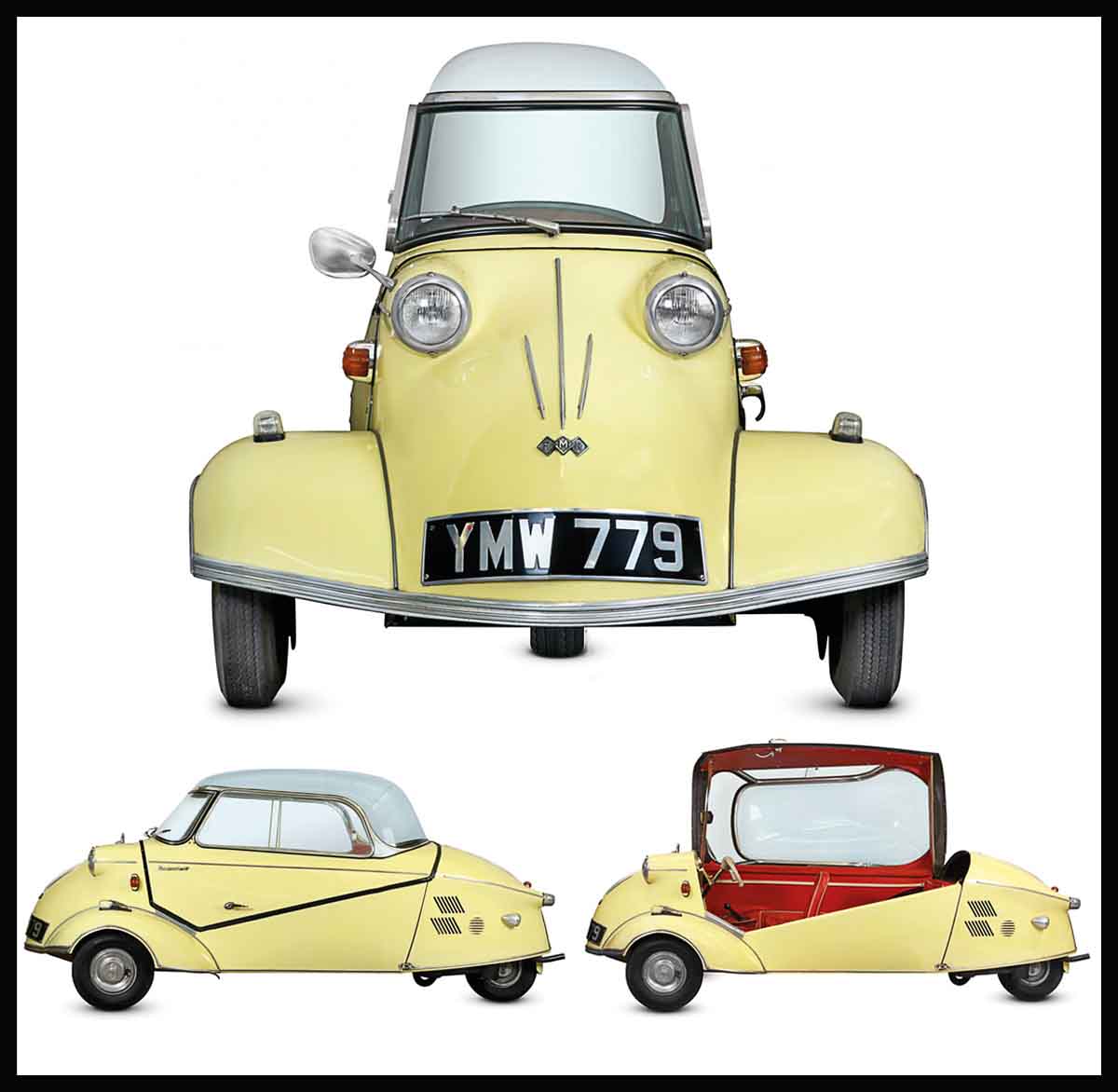
Microcars
After World War I a rush of very cheap, very crude, little vehicles known as “cycle cars” appeared, but these were killed off by proper cars in miniature such as the Austin Seven and Citroen 5CV. This pattern was repeated after World War II, with the appearance of tiny “microcars.” Many were three-wheelers with little motorcycle engines, and they were a common feature of 1950s’ roads. When proper baby cars, such as the Fiat 500 and original Mini, were launched, and living standards rose, microcar owners traded up and sales fell away.
Messerschmitt KR200, 1956
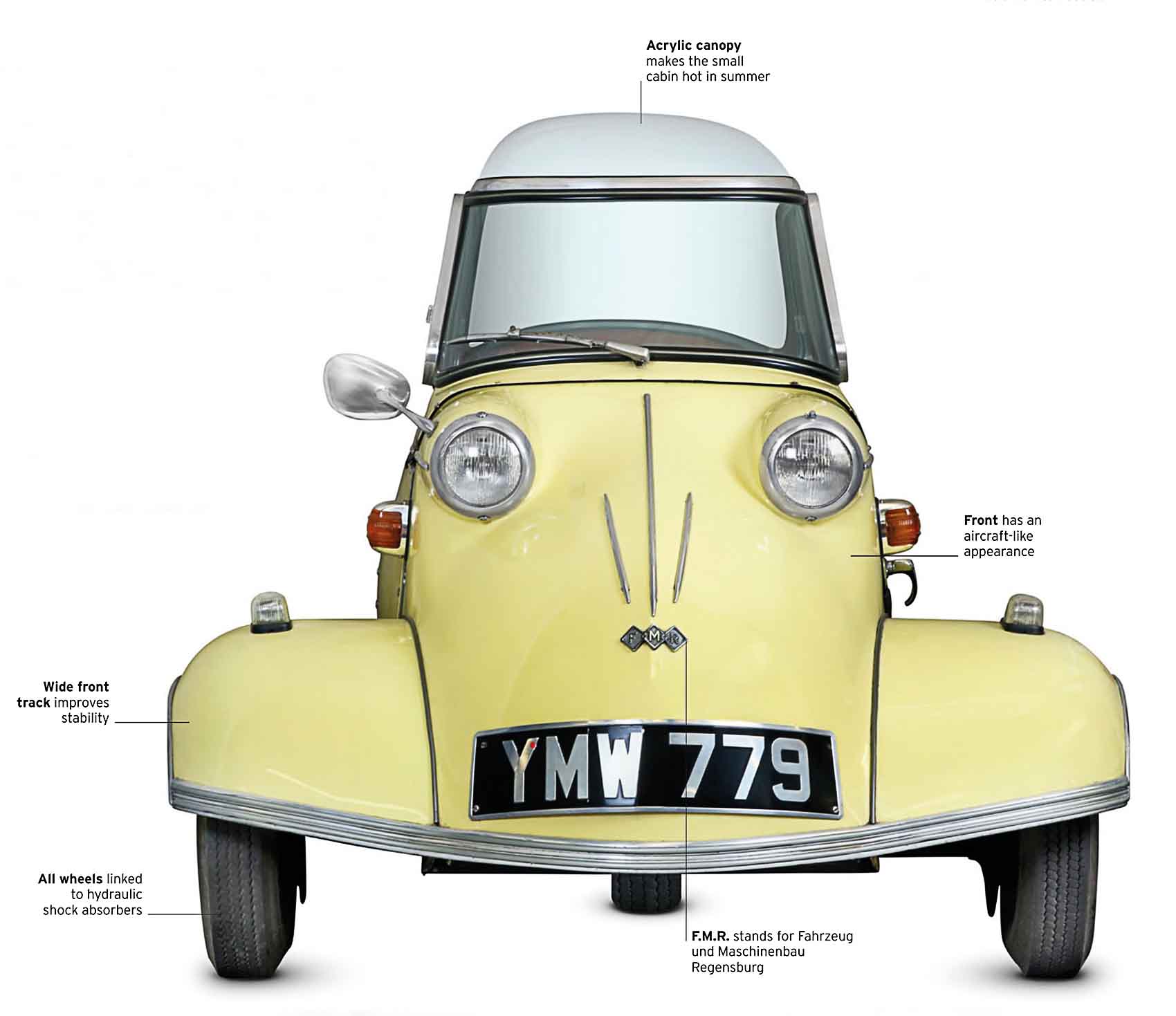
| Origin | Germany |
| Engine | 191 cc, one-cylinder |
| Top speed | 60 mph (96 km/h) |
In the 1940s German aeronautical engineer Fritz Fend created a manually powered invalid carriage. Powered versions followed, and Fend developed the famous tandem-seated KR200 with bubble canopy and handlebars, built by aircraft-maker Messerschmitt. Fend was working on a new microcar when he died in 2000.
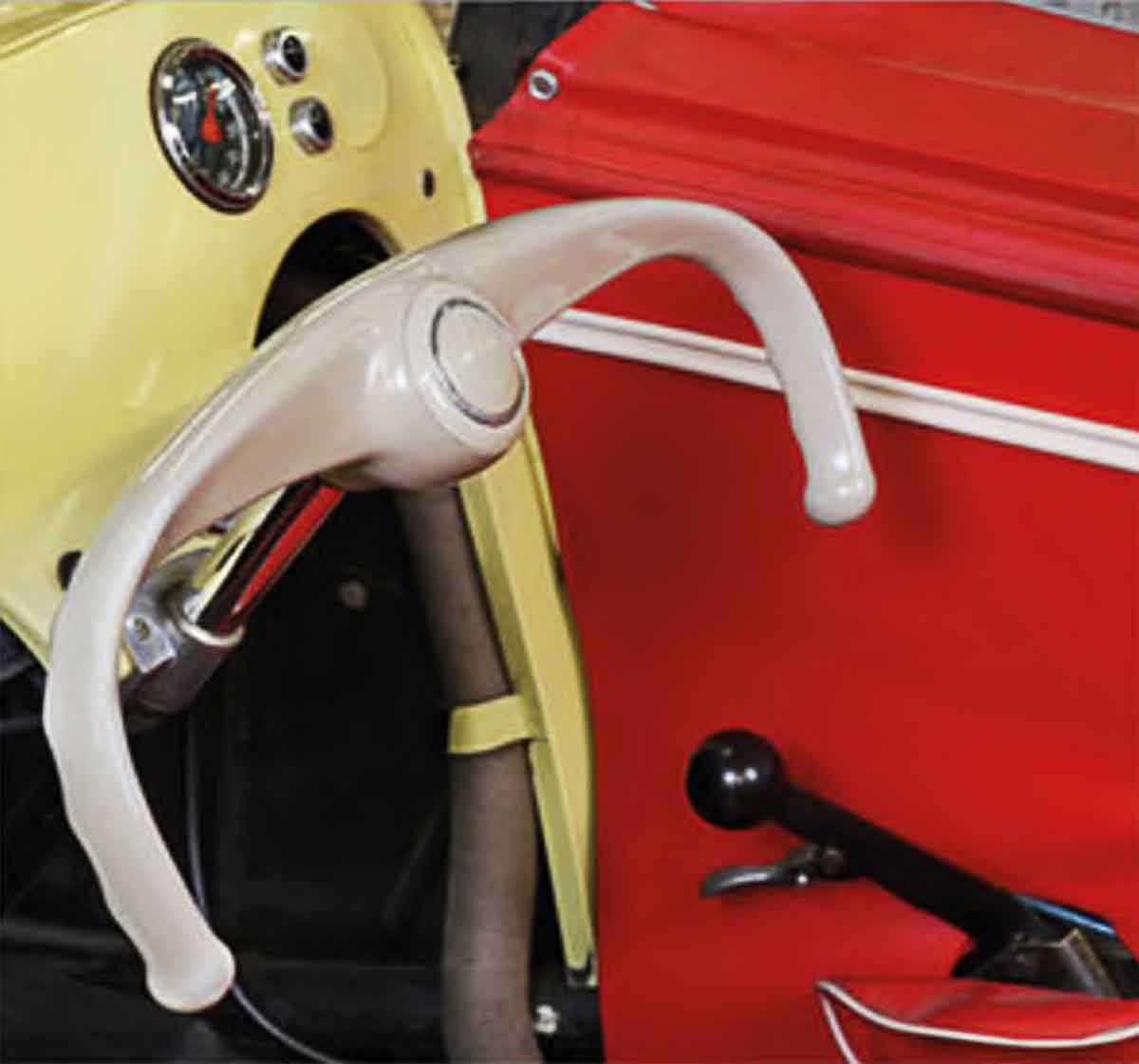
Unconventional controls
The handlebars were linked to the tie rods, giving very direct steering. To engage reverse, the engine was stopped and restarted going backwards, resulting in four reverse gears. A secondary lever, located on the gear-shift, was used to knock it into neutral.
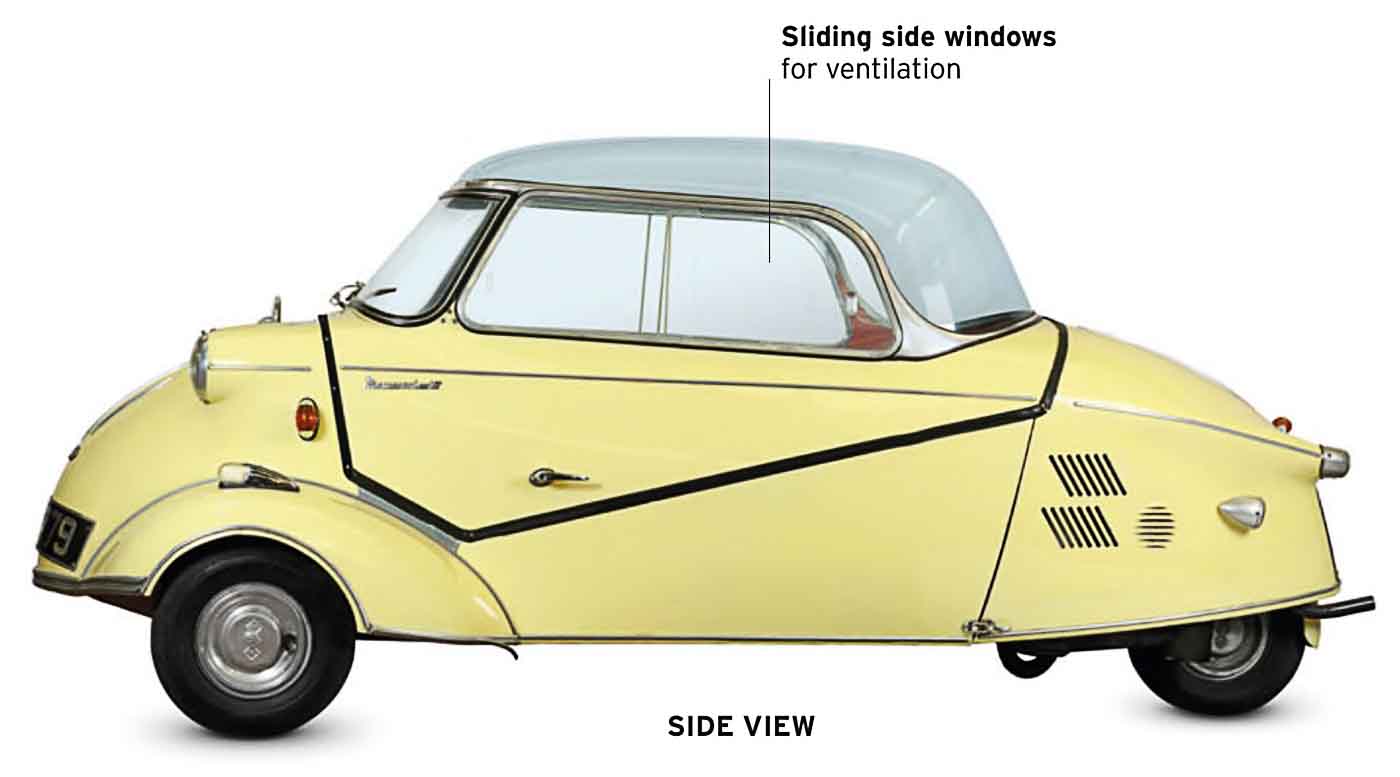
Riding in tandem
With the driver at the wheel, the passengers sat directly behind. Although narrow, the rear featured seating for an adult and child. This seating pattern gave the car a low centre of gravity, and with a wheel at each extreme it handled well for a three-wheeler.
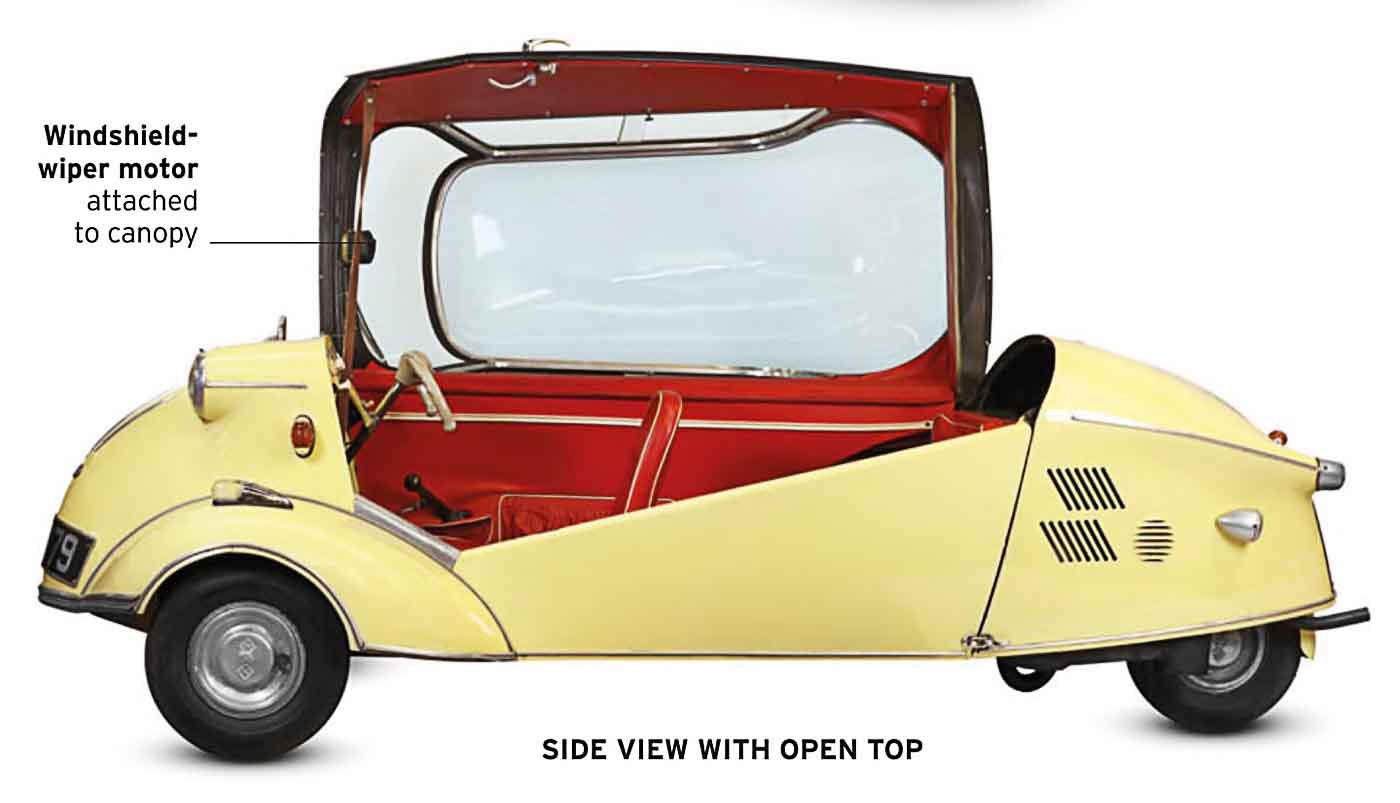
Raising the roof
Hinged on the right-hand-side, the acrylic canopy was secured with a single catch. Once open, the rear bodywork could be lifted, giving access to the engine, which was located behind the rear passenger. There was also a spare wheel stowed here.
BMW Isetta 300, 1955
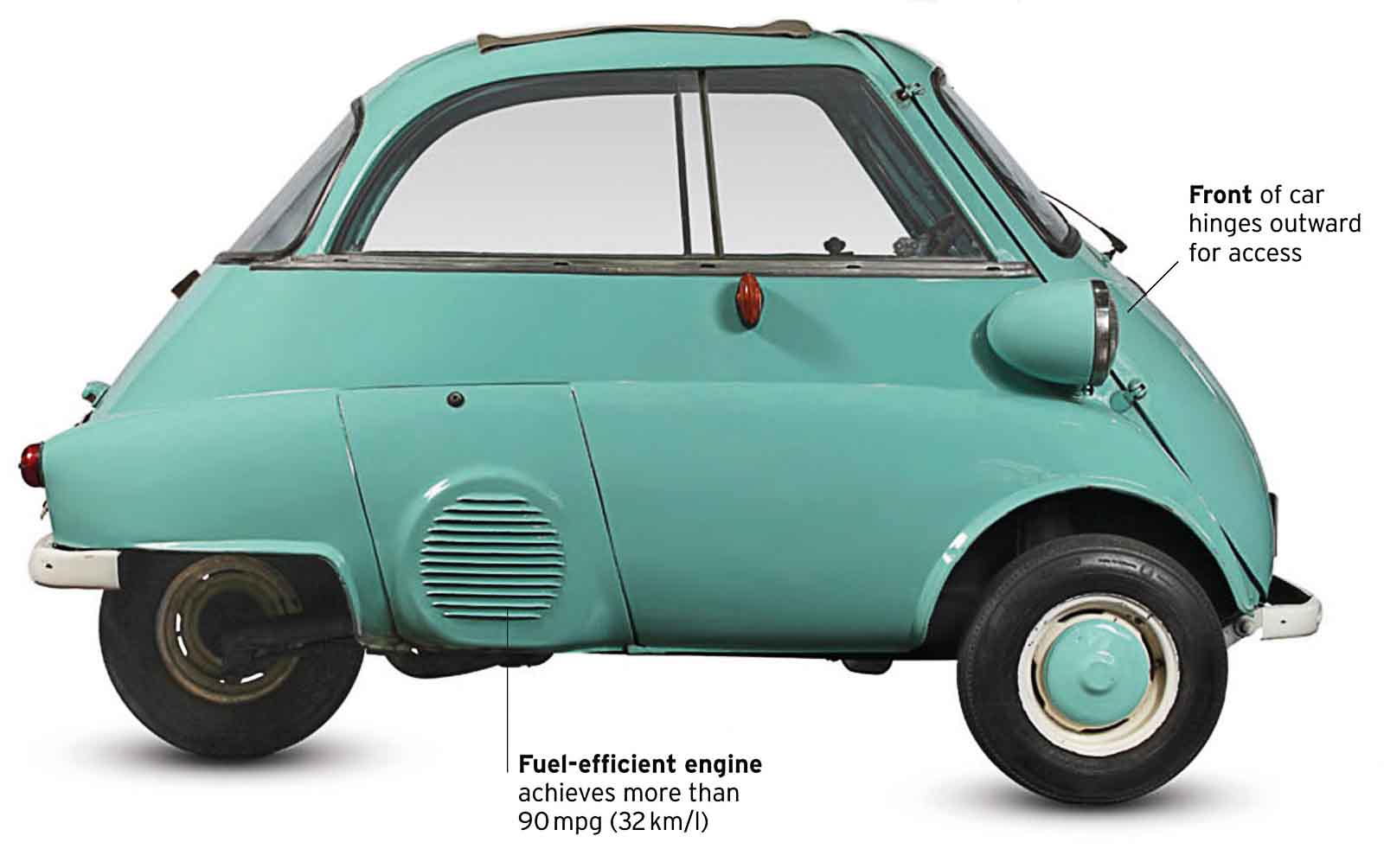
| Origin | Germany |
| Engine | 298 cc, one-cylinder |
| Top speed | 50 mph (80 km/h) |
Conceived by Italian fridge-maker Iso (which later made supercars), the Isetta was later built by cash-strapped BMW, and the egg-shaped car was even assembled in an old railway workshop in Brighton in the UK. The Isetta was sold with three or close-double rear wheels.
Vespa 400, 1957
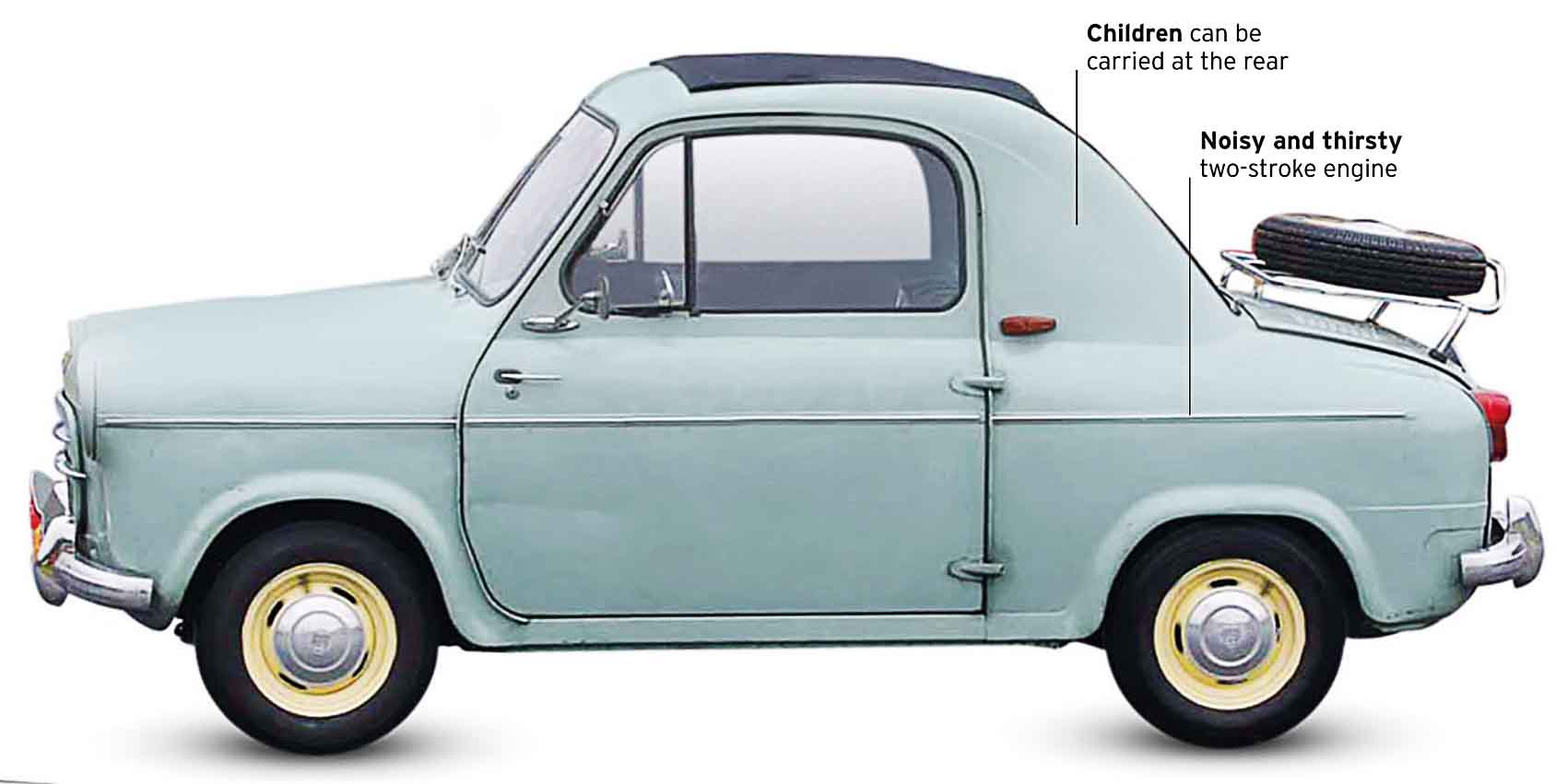
| Origin | Italy/France |
| Engine | 393 cc, straight-two |
| Top speed | 52 mph (83 km/h) |
Designed by Italian aircraft, scooter, and baby truck-maker Piaggio, but built in France, this well-made two-seater had a rear engine, all-independent suspension, monocoque body, synchromesh gearbox, and hydraulic brakes. It also featured a roll-top, canvas roof, a little like the first Fiat 500.
Scootacar, 1958
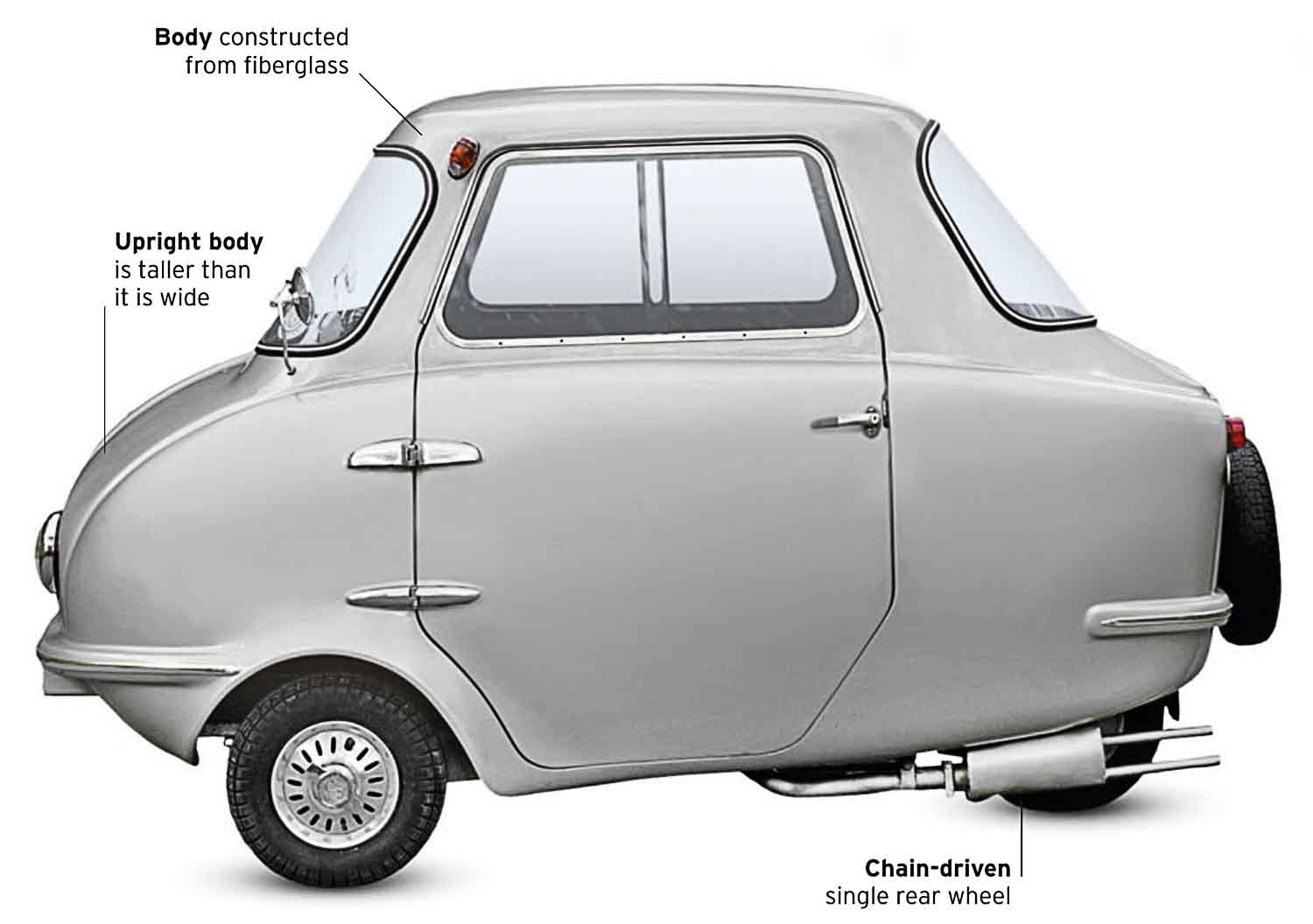
| Origin | UK |
| Engine | 197 cc, one-cylinder |
| Top speed | 45 mph (72 km/h) |
A British take on the bubble-car theme, the Scootacar was built in Hunslet in Yorkshire, by a railway-locomotive-maker, apparently because a director’s wife wanted something easier to park than her Jaguar. Occupants sat in tandem over the engine, and the Scootercar had one door and handlebar steering.
Frisky Family Three, 1958
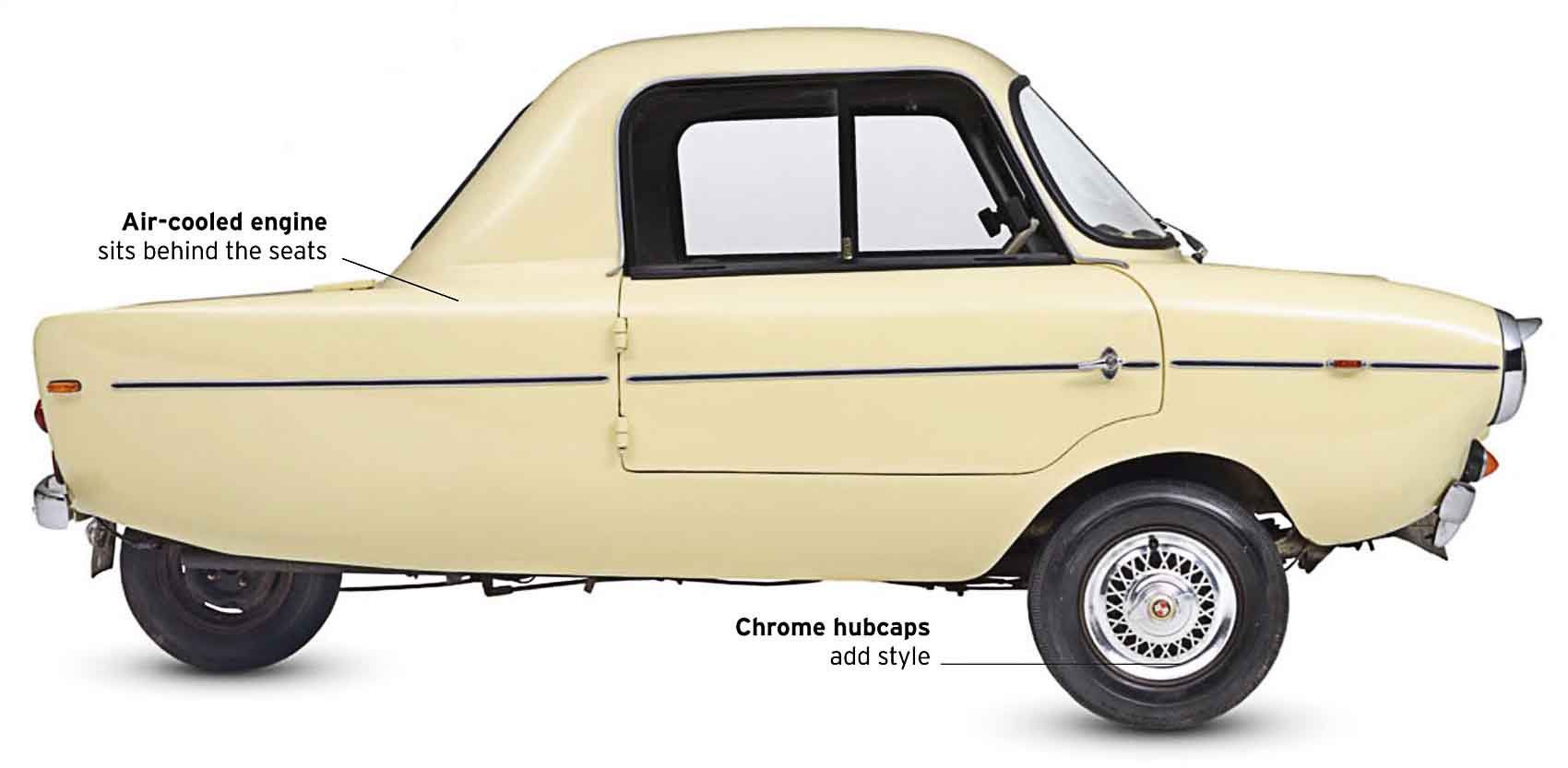
| Origin | UK |
| Engine | 197 cc, one-cylinder |
| Top speed | 44 mph (70 km/h) |
English engineering firm Meadows made engines for other companies before launching the Frisky, a microcar styled by Italian designer Michelotti. The prototype had gullwing doors—production versions had normal doors and chain drive—and the engine could be started “backwards” for reversing. Later Friskys were cheaper-to-tax three-wheelers.
It is a quote. The Classic Car Book – The Definitive Visual History 2016




